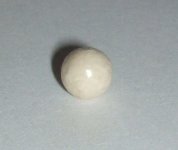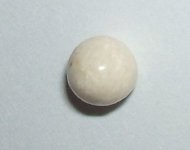You are using an out of date browser. It may not display this or other websites correctly.
You should upgrade or use an alternative browser.
You should upgrade or use an alternative browser.
Stunning Scallop Pearl (Atlantic) collection
- Thread starter pierrettedE
- Start date
CathyKeshi
Well-known member
I never saw this thread, and am delighted by it. Curious to know what became of this scallop pearl lot?
JerseyPearl
Well-known member
I love how we learn something new each and every day on this forum!
Lagoon Island Pearls
Well-known member
- Joined
- Dec 8, 2009
- Messages
- 2,139
Permission statement
Permission statement
Permission statement
This is wonderful news! Wikipedia and its media repository, Wikimedia Commons, are rather strict about having proper permission from the copyright holders of images, especially those "found" on the Internet (which is what I have done). In order for me to place any images from you on Wikipedia I will need you to submit a "permission statement" for the image(s), which is a body of text (three or four paragraphs) indicating that you understand that you are releasing the rights, that you are indeed the copyright holder, and that you understand that you can't change your mind later. I can upload the images myself and indicate when I do so that the author's permission statement is pending. Once you look over the permission statement and agree to its terms, you will need to send the statement back to Wikimedia Commons from an email address that legitimately appears to be yours. Then an OTRS agent (it could even be me!) will review your statement and verify that you are releasing the rights. If you do not send in your permission statement within 7 days of my uploading the file, it will be deleted and I will be back at square-one. The permission statement is SUPER EASY! Can I send it to you?? You can of course ask me any questions you like about the process— I've done this sort of thing many times.If they are posted by me, I am the photographer and it's okay.
Pierrette
JerseyPearl
Well-known member
A natural pearl from a Purple Hinged Rock Scallop (Crassadoma gigantea)
Dave, that is really a cool pearl! Can you offer some background on the unusual, almost patchwork like appearance to these pearls? They remind me of opals.
Lagoon Island Pearls
Well-known member
- Joined
- Dec 8, 2009
- Messages
- 2,139
Dave, that is really a cool pearl! Can you offer some background on the unusual, almost patchwork like appearance to these pearls? They remind me of opals.
My neighbor found the pearl following a seafood dive. Rock Scallops are are a popular favorite locally. It's big for a natural, approximately 12mm.
Scallops and Rock Oysters differ from the otherwise normal shell structures of most mollusks in that they're formed by foliated calcite. Steve's post mentioned this. There is aragonite present, but it's observed in long strands (as opposed to hexagonal plates in other pearls). There's near zero pigmentation in most species of scallops, hence the highly calcitic properties are clearly visible deeply within the pearl. This also accounts for their highly lustrous surfaces, especially when harvested in winter months.
amti
Community member
This sounds like a pretty standard release. Would the photographer be credited? And if you are receiving compensation, will the photographer receive anything? I am glad you are requesting permission because so often, photos are stolen without getting permission.
This is wonderful news! Wikipedia and its media repository, Wikimedia Commons, are rather strict about having proper permission from the copyright holders of images, especially those "found" on the Internet (which is what I have done). In order for me to place any images from you on Wikipedia I will need you to submit a "permission statement" for the image(s), which is a body of text (three or four paragraphs) indicating that you understand that you are releasing the rights, that you are indeed the copyright holder, and that you understand that you can't change your mind later. I can upload the images myself and indicate when I do so that the author's permission statement is pending. Once you look over the permission statement and agree to its terms, you will need to send the statement back to Wikimedia Commons from an email address that legitimately appears to be yours. Then an OTRS agent (it could even be me!) will review your statement and verify that you are releasing the rights. If you do not send in your permission statement within 7 days of my uploading the file, it will be deleted and I will be back at square-one. The permission statement is SUPER EASY! Can I send it to you?? You can of course ask me any questions you like about the process— I've done this sort of thing many times.
pierrettedE
New Member
My neighbor found the pearl following a seafood dive. Rock Scallops are are a popular favorite locally. It's big for a natural, approximately 12mm.
Scallops and Rock Oysters differ from the otherwise normal shell structures of most mollusks in that they're formed by foliated calcite. Steve's post mentioned this. There is aragonite present, but it's observed in long strands (as opposed to hexagonal plates in other pearls). There's near zero pigmentation in most species of scallops, hence the highly calcitic properties are clearly visible deeply within the pearl. This also accounts for their highly lustrous surfaces, especially when harvested in winter months.
Hello from Nova Scotia Dave! I don't think I've spoken to you in a few years but every once in a while go check out what you are up to. I should log in PG more often for sure! Super interesting, absolutely stunning photos and more and more information, news and research. wow.
pierrettedE
New Member
This is wonderful news! Wikipedia and its media repository, Wikimedia Commons, are rather strict about having proper permission from the copyright holders of images, especially those "found" on the Internet (which is what I have done). In order for me to place any images from you on Wikipedia I will need you to submit a "permission statement" for the image(s), which is a body of text (three or four paragraphs) indicating that you understand that you are releasing the rights, that you are indeed the copyright holder, and that you understand that you can't change your mind later. I can upload the images myself and indicate when I do so that the author's permission statement is pending. Once you look over the permission statement and agree to its terms, you will need to send the statement back to Wikimedia Commons from an email address that legitimately appears to be yours. Then an OTRS agent (it could even be me!) will review your statement and verify that you are releasing the rights. If you do not send in your permission statement within 7 days of my uploading the file, it will be deleted and I will be back at square-one. The permission statement is SUPER EASY! Can I send it to you?? You can of course ask me any questions you like about the process— I've done this sort of thing many times.
That is no problem, but since I'm unsure which photos you are referring to (the first in the thread are probably mine), I won't be able to sign off on others' work of course
Photo credit: yes
Photo credit: yes
Photo credit: yes
Yes, the photographer absolutely is credited. When the file is uploaded, the uploader (which can be the photographer or someone else) must indicate the photo's author, and this becomes part of the file's permanent history. The Wikipedia article will not allow anyone to "watermark" a photo, and the photographer's name will not appear in the article, but anyone clicking on the image will be taken to a page that provides licensing information and the photographer's name-- this can even include a contact email address for the photographer, if desired, and a hyperlink to that email address that can be reached with a single click. Everything about Wikipedia works by volunteers, and there is no compensation involved for anyone (including me!). I can give photo credit and a link, and the honor of having the work appear in one of our articles. Please let me know if we can do this. Thanks!This sounds like a pretty standard release. Would the photographer be credited? And if you are receiving compensation, will the photographer receive anything? I am glad you are requesting permission because so often, photos are stolen without getting permission.
Similar threads
- Replies
- 6
- Views
- 3K
- Replies
- 0
- Views
- 4K
- Replies
- 155
- Views
- 35K
- Replies
- 2
- Views
- 8K


